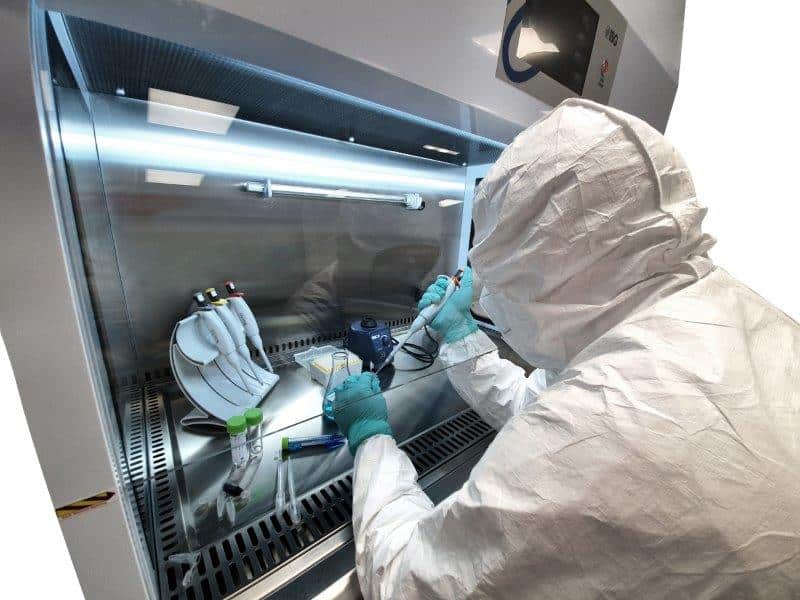
Choosing the right equipment for your laboratory is vital, but it isn’t always straightforward. When it comes to enclosures, you will likely come across lab isolators and biosafety cabinets and knowing which is most suitable for your lab can be complicated.
Both are types of containment cabinets and are commonly used in laboratories, most notably in the pharmaceutical industry. Both types of equipment are designed to protect workers from toxic agents and harmful substances, while also preventing the spread of microorganisms which could cause infection.
As we’re a leading specialist in all things laboratory fume extraction systems, we’ve put together this guide to help you understand which is best for your application.
Lab isolators, or aseptic containment isolators (CAI) are commonly used by pharmacists and technicians in pharmaceutical laboratories. They make it possible to handle materials during the process of compounding and material transfer, as they provide a barrier for the technician’s safety. HEPA filters are typically used to filter out contaminated air and prevent it from being circulated back into the laboratory.
As this kind of equipment uses a complete barrier between the materials and technicians, it is ideal for both non-hazardous and hazardous substances. For non-hazardous materials, a compounding aseptic isolator, or CAI, can be used to create a positive pressure-controlled space for working. For hazardous substances, a CACI, or compounding aseptic containment isolator is ideal as it creates a negative pressure-controlled space.
Known by many variations of the name BSCs are commonly found in research laboratories and are used for a huge range of applications, including handling animal tissue, transgenic plants, genetically modified microorganisms, pathogen microorganisms, and human gene studies.
They work by using air flow to protect technicians and the lab from exposure to these biohazards. Biosafety cabinets are available in different classes, each suited to different agent risks. Read our expert's insights for more information on the differences between biological cabinet classes.
Both types of equipment can be used to keep you and your team safe in a research laboratory. They limit exposure of hazardous substances and ensure a clean work environment, by not allowing pathogenic microorganisms to enter or exit the workspace.
The key difference between a lab isolator and a microbiological cabinet, is that the latter is front opening, while a lab isolator is completely contained. With an opening, there is an increased risk of hazardous pathogens escaping into the lab. This means they are not ideal for handling high or moderate risk hazardous substances, which are much more suitable in a lab isolator.
There are various pros and cons to be aware of when considering aseptic containment isolators, including:
Now we have looked at the pros and cons of lab isolators, it is vital we consider the same for biosafety cabinets:
Ultimately, when considering the best type of equipment for your laboratory, it will depend on the type of materials and hazardous substances you are handling. For high-risk materials, a lab isolator can usually be the most suitable option, as the containment barrier means the technician and lab is completely protected.
For low-risk substances, a BSC could be the best solution, as they provide more than adequate protection, whilst also being easy to work with. It really does all come down your application of the unit. That’s why at Tion, we take the time to understand your specific requirements so we can build and install the best solution possible for your needs. For advice and guidance on the best option for you, speak to our amazing team today.
Read our Privacy Policy for more information on how we collect and process data.



No thank you
Read our Privacy Policy for more information on how we collect and process data.